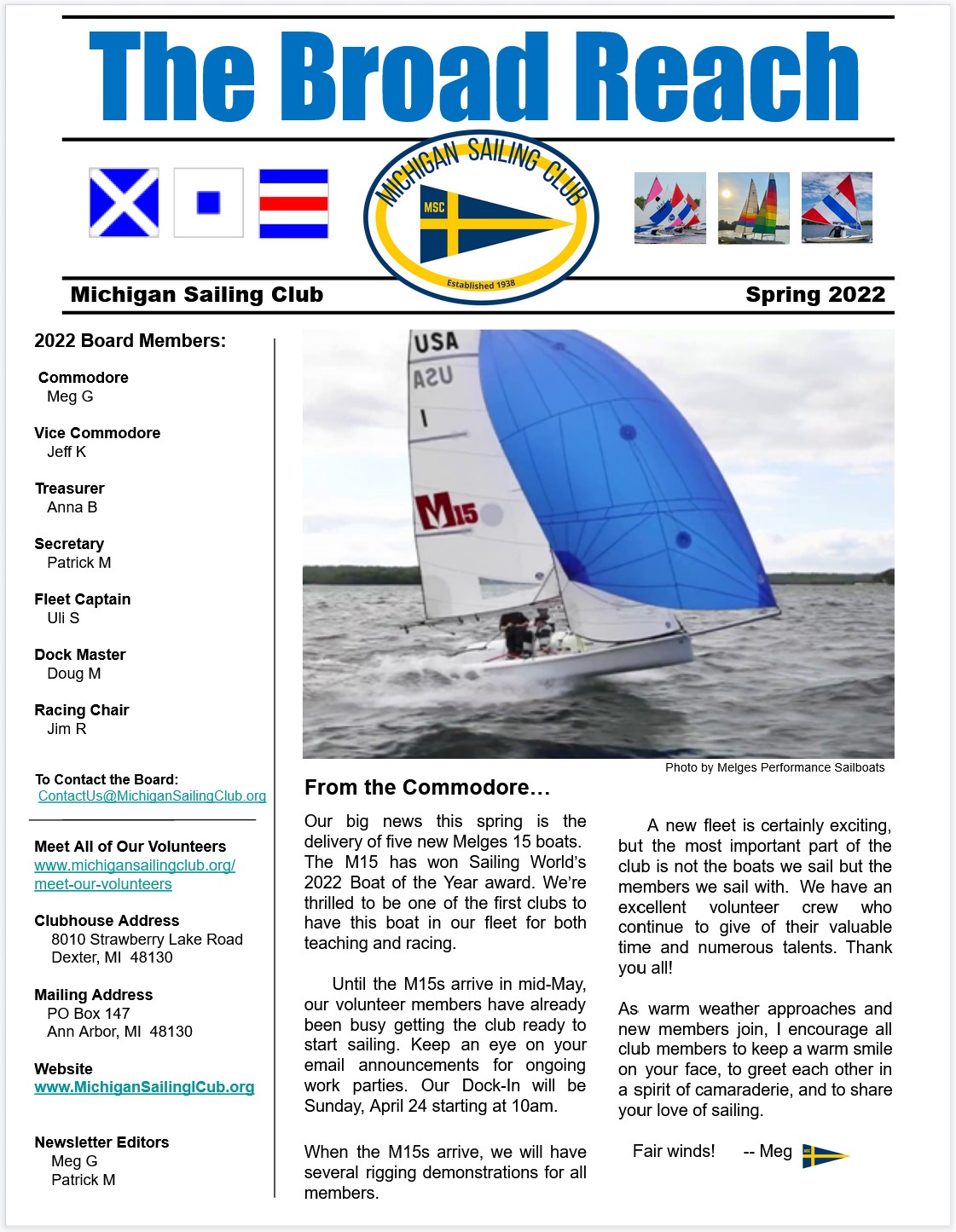Here’s a summary of the club’s collected wisdom on spring/fall/winter sailing clothes. Detailed responses (including places to buy clothing, and wetsuit-specific tips) follow.
Cotton: NO!
Silk: YES
Polypropylene: YES YES YES
Other synthetics: YES
Wool: YES YES YES
Rain/spray gear: YES
Foulies: YES
Wetsuit: YE$
Drysuit: YE$$$
Wetsuits can be used for a variety of reasons – perhaps you’d like to be Batman rocking a skin-tight suit (cape and utility belt not included), or show off your seal impression, or just wear them for your outdoor sporting adventures? MACkite has you covered with a variety of widths and cuts to keep flexibility while keeping you warm. But, before you make your big purchase, you’re probably wondering, “Which wetsuit is right for me?” Your use of a wetsuit depends on the air and water temperature and your needs of the suit.
Have you ever felt those 80-degree days, when you want nothing more than to hit the beach, but then you find yourself freezing in the water? Often, when that bright sun comes roaring into the sky, the air heats up faster than the water so the water is often cooler in the day and feel slightly warmer at night when the air cools down. This phenomenon can be misleading and make you feel like you don’t need as much protection when, in reality, you do. Whether you’re rocking a 50-degree water temperature, or finding yourself snowkiting in anything below 32-degrees, we’ve got your back (and your front).
If you’re not sure which suit is going to be right for you, we’re available at 800-622-4655 to talk you through it!
https://www.mackiteboarding.com/wetsuits-by-thickness/
| Wetsuit Temperature Guide | ||||||||||
| Water Temperature (F) | Thickness | Wetsuit Type | Stitching | |||||||
| > 72° | N/A | Rashguard | N/A | |||||||
| 65° – 75° | 1 – 2/1 mm | Neoprene Top / Shorty | N/A | |||||||
| 62° – 68° | 2 – 3/ 2mm | Long Sleeve Short Suit / Full Suit | Flatlock | |||||||
| 58° – 63° | 3/2 – 4/3 mm | Full Suit + Boots | Sealed | |||||||
| 52° – 58° | 4/3 – 5/4 mm | Full Suit + Boots + Gloves + Hood | Sealed & Taped | |||||||
| 43° – 52° | 5/4 mm | Full Suit + Boots + Gloves + Hood | Sealed & Taped | |||||||
| 42° & Below | 6/5 mm | Full Suit + Boots + Gloves + Hood | Sealed & Taped | |||||||
Drysuits
Here’s one of the best videos on the differences between wet and dry suits: https://www.youtube.com/watch?v=xDG3whJ2e0k
https://www.mackiteboarding.com/drysuits/
10/2023
As the weather gets colder you may want to extend your comfort this fall and early spring, Wetsuits, hiking pants, and dry suits can be great value.
9/26/2000
QUESTION: For fall and spring sailing, I’d like to have the right clothing, to be as comfortable as possible. So should I consider buying:
(a) a standard wetsuit, or
(b) a “bare skin” wetsuit, or
(c) a dry suit, or
(d) foul weather gear, or
(e) something else, or
(f) none of the above?
Responses, separated by solid lines
I just bought a wet suit, so I have a little bit of input. I talked to a lot of people and read some literature before buying it (there are some web pages with info as well) and came to the conclusion that the best wetsuit for a sailor is 3mm thick. Some people argue that the farmer john type is best because it gives you freedom of arms. I have a full body wetsuit because I do a lot of windsurfing and am in the water a lot. I got an O’Neill brand, and it cost $220. It fits me perfectly, which is crucial, because if it is too loose it will not insulate well. I tried it out last weekend and it works great. It was fairly cool weather out but I was perfectly warm windsurfing in my wetsuit. By the way, I know several other people who paid about $100 for theirs.
I guess it depends on what type of activity you will be doing most. Foul weather gear or just wearing synthetic fibers may be cheaper than a wetsuit, but a wetsuit is more versatile. Now I can use mine for sailing, windsurfing, and diving. If you get a wetsuit though, you will probably want to buy wetsuit boots to go with it.
If you are just doing sailing you can probably get by with wool and polyester and a lot of layers. If you fall in the water the crash boat will rescue you and you can get warm in the club house. Also there is not a lot of time in the Fall season and it’s only open on weekends, so it might be good to learn and see what your needs are and then buy fancy equipment later.
I have been successful sailing w/ out a wet suit, but that is because I am very good at staying dry during my many capsizes. In other words, yes you can capsize very, very easily in the fall/spring. I don’t know what a (b) a “bare skin” wetsuit is, but I think you will want to look into buying a wet suit(others have probably all ready written what ply or weight to purchase). In addition, I can comment on foul weather gear.
I do not have foul weather gear (expensive), but I do have a set of waterproof pants and jacket. I then wear polypropylene (synthetic) long underware, and fleece or wool. I also wear nylon pants over the waterproof pants to protect them from ripping or tearing (foul weather pants are strong enough, $$) As long as it is NOT Cotton.
Don’t forget to check the resale shops for cheap wool sweaters, I found a great one.
So don’t get the wrong idea, I recommend the wet suit.
oh, sailing gloves!! don’t forget those, and again, there are many to choose from.
Sailboarders use wet suits. I am pretty cold tolerant. On a cold or windy day, I wear thin polypropylene ski underwear, shorts, shirt and foul weather gear, shoe and gloves.. This means a rain pant and rain jacket. I find it more comfortable. It protects against the spray, but is still layerable if the sun comes out. If you tip over, it will keep you somewhat warm even in cold water. Other people use a wet suit, especially folks who get cold easily. I find them too hot.
You can buy a good sturdy set of gear at Dunham’s near Kmart cheap.. I like to use one that has a cloth backing to make it strong. Be sure that it isn’t too floppy or it will get hung up in the rigging.
Ok, cool, I know what “bare skin” is, white water rafters wear that a lot. The stuff I own is versatile. I got the rain pants for kayaking, that is why I ware nylon pants over them for sailing (because they are not durable enough.)
Good boots, I forgot I own a big pair of rubber sailing boots, yea that is one of the most important, and yes gloves help.
Clothes: This is dependent on the individual. I haven’t bought anything. I use a wool sweater, wind breaker, jeans and old sneakers. But, I’m sure I look grubby. If I get cold I go into the boat house to warm up. And, I wear these when I race which is quite often. However, the dry suits seem to be preferred over wet suits as you stay dry.
I prefer wool sweaters and foulie combinations. Wetsuits are too hot and don’t breathe. Though some people like them.
My wife gets cold easily, and she was not comfortable in a bare skin..they do make some with linings that do insulate you better than just a regular dive “skin” It depends on if you get cold easily…personally they have 3 mil wet suits that may be better for you, I recommend a surfer style wet suit rather than a diver style…..this will give you the warmth plus a little better flexibility….
I don’t think I am going use a wet suit……I know that poly propylene will keep me warm, plus layering my clothing to wick the sweat away, and wearing loose fitting clothing is the best approach…if you get wet, maybe a change of clothes…I went to a mountain warfare school when I was in the Marines…and poly pro works wonders and dries quickly….Maybe you should check out Gander Mountain (expensive though)….or Cabellas (also expensive)…maybe Dunham’s or a discount sporting goods store would be a good first try too…I know that wet suits are expensive especially when you have them made custom….might be worth the time and money to see how you fare with warm weather gear before you make such a big investment..
There are four types of sailing clothing..
1)cotton – jeans, normal t-shirts, pants etc… Once they get wet, they stay wet and take hours in the sun to dry. They also do not keep you warm when you are wet…
2)synthetic clothing – nylon(cordura, suplex…), capaline (long underwear) polypropylene, burgaline, polar fleece etc… Very warm, even when wet. Thicker the better, but is usually very expensive. Nylon, especially suplex dries extremely quickly and blocks wind well. I like to wear spray equipment or rain coat/pants over capaline. Even if you fall in it will keep you warm.
3)neoprene – wet suits – keep you warm in medium conditions – 50-60 degrees. If you wear a rain coat and/or pants over them, they keep you even warmer. A newer product called ‘fuzzy rubber’ has come out and it is very nice – polar fleece on the inside, neoprene on the outside. Once you get wet, you stay wet, but you stay warm.
4)drysuits – keep you dry but are extremely expensive (around $300 for a rubber/$5-600 for goretex). They are nice when it gets really cold, but are not really worth it unless you are going to sail a lot in the winter.
9/27/2000
QUESTION: What would silk long underwear be like in the water? How’s cotton when it’s wet? When you wear layers of wool, foulies, et cetera, is your buoyancy adversely affected?
Under our conditions they would all work as we have a warm boat house which is just a few minutes away. I have worn different underwear and being close to the boat house there is not much difference after you capsize. You’re wet and cold and want to get to a warm place and get your wet clothes off, and the snuggling with a warm body or two or three would be great, but we’re not that advanced yet in our hypothermia recovery procedures. Cheers.
cotton is evil- it soaks the heat out of you. Wool, poly blends, spray protection with foulies are all good.
re: buoyancy- that will depend on how strong of a swimmer you are. If the water is cold and wind strong I usually wear a PFD
Cotton’s gross in water. I highly recommend duofold capilene or polypropylene-backed wool long underwear. The backing keeps the wool from itching and helps with keeping water away from your skin. The wool keeps you warm even when it’s wet. I was windsurfing a while ago wearing a duofold long-sleeve shirt and found that it was pretty warm even though it was soaking wet. They’re making duofold now with “wicking” materials (like capilene) instead of cotton, mostly because when you sweat cotton gets wet and you get cold, even on dry land.
As for buoyancy: wearing lots of clothes definitely makes it difficult (or impossible) to swim without a life-jacket. If you’re wearing foul-weather pants or boots, you should definitely be wearing a life jacket. Also note that if you’re wearing all those clothes, the water is probably pretty cold, and so swimming will be your last concern if you fall in (after breathing and getting back out again as quickly as possible). On the other hand, if you do wear a life-jacket you should be fine. I’ve fallen in wearing foul weather jacket and pants and a full set of clothes a few times AND a life-jacket and it hasn’t been a problem.
My wife uses silk, but I think that the polypropylene wicks and dries better. Cotton is a definite no. It gets wet, but won’t dry. The natural fiber to use in wet cold conditions is wool. It retains its warming properties with hollow fibers even when wet. Unfortunately it is rough against the skin. Polypropylene fabric was invented to keep warm when wet like wool, be soft like cotton, and wick away moisture like Gortex.
If you’re in a heavy wind, you will have on a life jacket. Whatever gear you wear will not much affect buoyancy, especially because of trapped air, but it will be more cumbersome and restricting to swim in, and you will be heavier getting out of the water into the boat. That is one of the reasons that sailboarders use wet suits; they’re trimmer. Of course, it’s also because of the constant splashing, which you won’t get it the drier ride of a boat.
Hmm….Silk doesn’t breathe so I don’t really think you should wear that. However, I think I need your phone # cause you’re turning me on with your silk long-undies and your “how’s cotton when wet” e-mail. 🙂 (Just kidding of course.)
Silk long underwear is fine when it gets wet. Mine has always kept me warm. Cotton is bad when it is wet. It will not keep you warm and in fact will just make you colder. I don’t think multiple layers would adversely affect your buoyancy, although it could make it a bit harder to climb into the boat. A wet suit will improve your buoyancy.
Silk is warm and will keep you warm if it is wet. Cotton will not keep you warm when it is wet (do not wear cotton sailing ever). But silk stinks if you get it wet or sweat in it. So unless you have silk all ready, I do not recommend you get it. I use my silk for skiing, where I can wash them directly afterwards.
So use poly propylene, and/ or fleece and wool. As for wool, it will stretch out when wet, so it can be a real hang up for your buoyancy. I have never swam in wool, but I saw a college racer walking to the boathouse after a capsize and his sweater sleeve was so stretched out it was dragging on the ground. Ha, Ha (the reason I laugh is that EVERY one else had on Gore-Tex waterproof suits, they are different than what divers wear, they are comfortable). He was shivering, it was April. The biggest problem I have swimming in my layers is the windbreaker, or rain coat I have on. What happens is that the sleeves get water in them and I can not lift my arms.
Well, I hope I did not deter you, I know that if you get a “dry” jacket, like these Gore-Tex suits I mentioned up above the sleeves will not fill w/ water. You can find the dry coats at REI in the kayaking section. Or look online and have companies send you catalogs. But REI is the best.
You typed, foulies, what is this?? Like foul weather gear??
Places to buy sailing clothing in Ann Arbor
Annapolis Performance Sailing, Online store. Huge selection.
Boat US Store, Online only.
Divers Inc, on Washtenaw (across from Arborland) in the Ponderosa stripmall. 971-7770. Aimed at scuba divers. Pricy, but good selection.
Dunham’s Sports, on Maple (Maple Village shopping center). 663-0770. General sporting goods (cheap).
Huron Scuba, on Jackson (in Jackson Square stripmall) between Wagner and Zeeb. 994-DIVE. Reasonable selection.
LL Bean, mail order outdoor clothing. Recommended: long sleeve synthentic shirts w/ SPF rating.
Midwest Sailing, on Dexter-Pinckney (aross from Portage Yacht Club in Pinckney). 426-4155. Small selection of clothing.
REI, stores in Ann Arbor, Northville and Troy.
Sun & Snow Sports, on Jackson between Wagner and Zeeb. 663-9515. Small selection.
TWC Surf and Sport, in Novi and Keego Harbor. (800) 636-7038. Windsurfing shop.
West Marine, in Taylor and Troy. Gigantic catalogs, usually one out at the club.
Wilderness Outfitters, on Main. 761-8515.
More information on wetsuits, from Paul Townsend
As for purchasing a wetsuit, I would hesitate before buying one from a dive shop. Divers have different wetsuit needs than sailors. A diving wetsuit is designed to be used under 10 to 100 feet of water, while a sailing/windsurfing suit is made to be used at the surface, both in and out of the water. Its a different set of design criteria and you may wind up paying for features that you don’t need or are actually counter productive. Diving wetsuits are usually thicker, more restrictive and do not insulate as well when out of the water.
There’s an exhaustive treatment of diving wetsuits at Diverlink, If you read it, you’ll see why you don’t want a diving wetsuit. That’s not to say that a dive shop won’t have a wetsuit suitable for sailing, but you need to make sure that you tell the salesperson what you intend to do with the suit and get one that is designed for your intended application.
Hints:
3mm thickness seems about right for sailing and windsurfing the shoulder season (April, May, Sept. Oct) Thicker suits restrict mobility. Thinner suits are less warm.
The john/jane style with exposed arms and full length legs gives you pretty good freedom of movement while covering the parts of the body that spend the most time under water.
Look for padded/ reinforced knees and rear.
Pay close attention to the seams, and try to get double-taped seams if you can.
It needs to be fairly tight to work properly. It will seem tight at first. Wear it for at least a half hour before buying it to see if you can stand it.
Don’t even bother with the zipperless ones. Even if you manage to actually get into one, you will have to call the fire dept. to get you out.
For women, definitely try to find a women’s model. If the store doesn’t have women’s models, look elsewhere. If they say that their suits are ‘unisex’, that means that they fit men, and women who don’t have hips.
We bought ours from Midwest Sailing (across from the portage lake yacht club) They have a limited selection and most of their gear is pricey, but we found good quality suits on sale at competitive prices (about $110 each). Other places I looked that had some reasonable products were Sun and Snow (on Jackson Road ~2 miles west of Maple).














